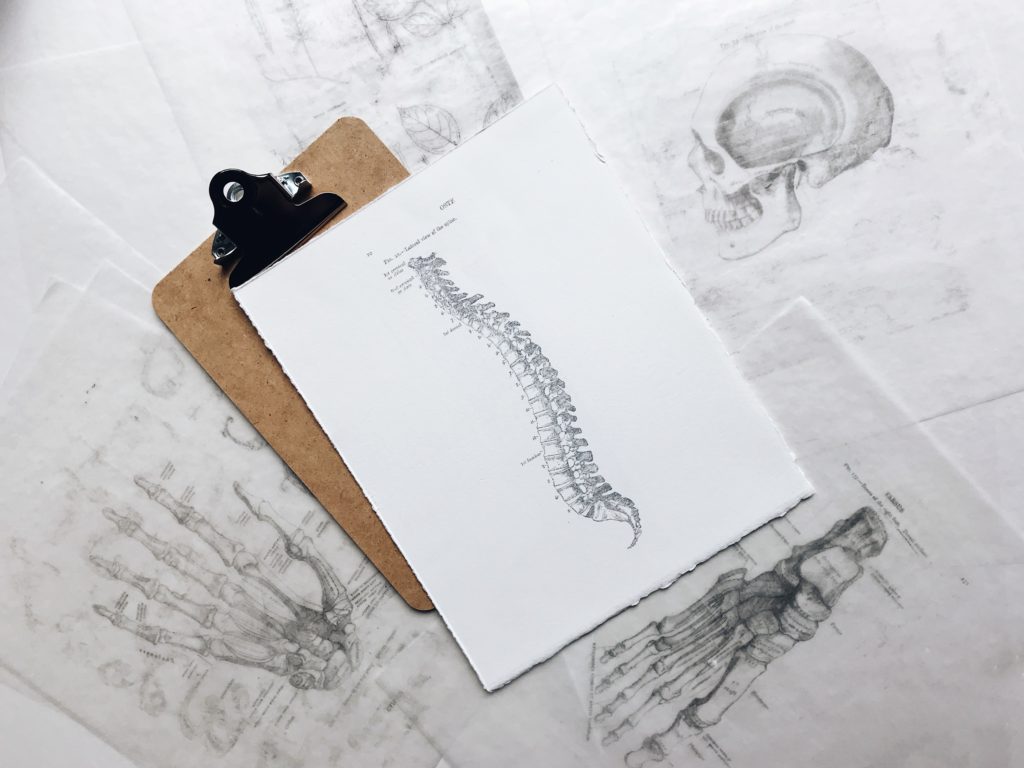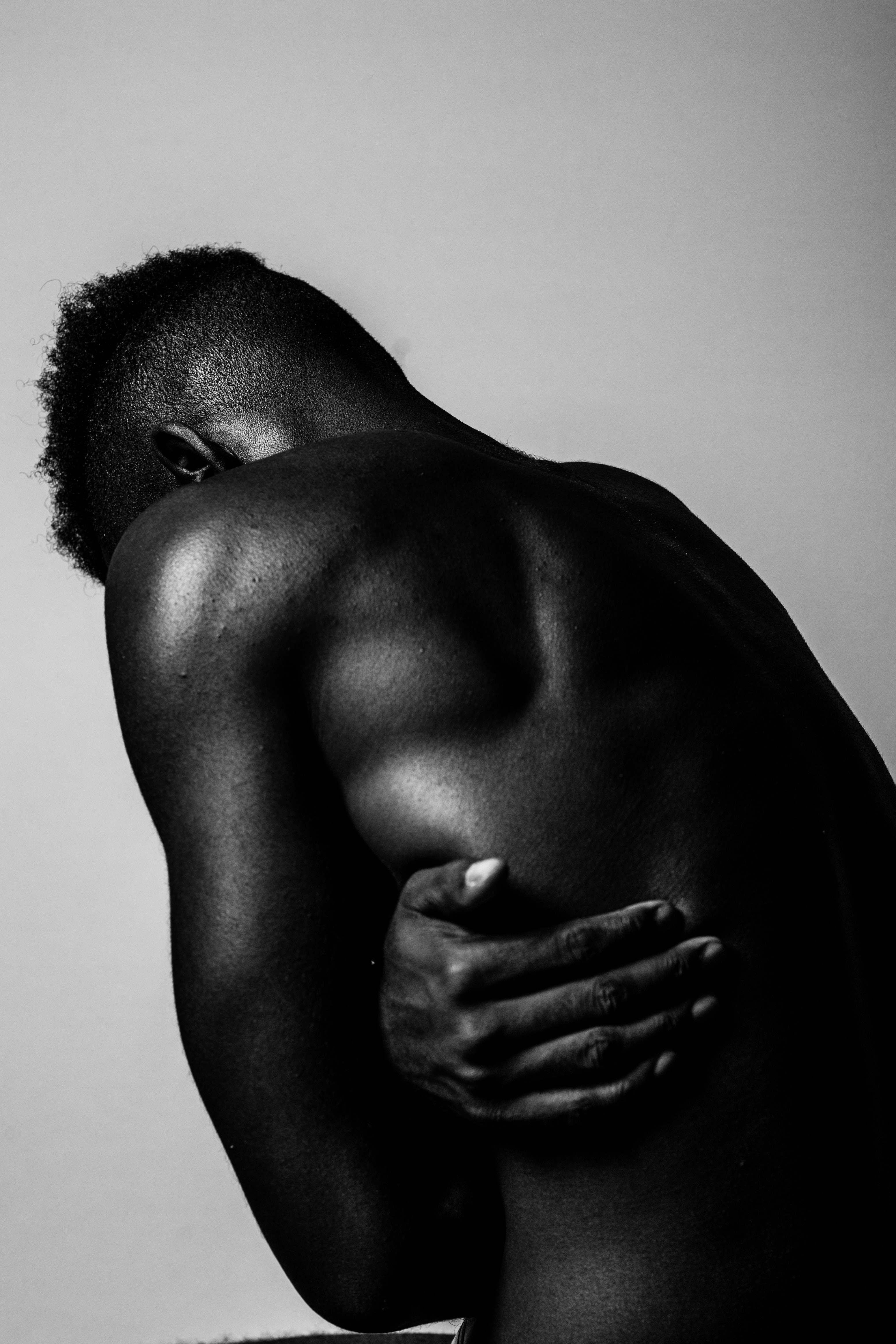
The vertebrae are the building blocks of the spine. In the lumbar region, there are 5 large vertebrae (named L1-5 in descending order). The primary function of the lumbar vertebrae is to bear the weight of the entire trunk whilst providing a moveable support structure and to protect the spinal cord. Located between the body of the vertebrae are the intervertebral discs. A healthy intervertebral disc comprises two parts. The centre of the disc is called the nucleus pulposus, which comprises a strong gelatinous like substance. The outer part is the annulus fibrosis. This is rich in pain carrying nerve fibres called nociceptors, in particular the outer 1/3 of the disc. When the disc loses its elasticity, it may protrude outside its normal boundary and may compress the spinal nerves or spinal cord.
The function of these discs is to act as a shock absorber. The most common level for a herniated disc to occur is at the level between the fourth and fifth lumbar vertebrae. This is the level where the weight of the entire trunk is being constantly absorbed and where most movement in our spine occurs.
As the architectural centre of the body, it also is strongly affected by lower limb biomechanics. This means that any dysfunction or injury of the lower limbs may in time predispose the spine to injury, dysfunction and weakness.
Herniation? Bulge? Slipped disc?
The terms used to describe disc problems in the lumbar spine are many and can be confusing. The terms herniation, slipped disc, ruptured disc or prolapsed disc are used interchangeably by different specialities in the medical professions to describe the disc protruding backwards and compressing the spinal nerves or spinal cord.
For the sake of simplicity, I will use the term disc herniation in this article to include all the above. The term disc bulge refers to the general enlargement of the disc beyond its natural boundary and does not include any impingement or compression of the spinal nerves or spinal cord.
There are many causes of disc herniations. Obesity, incorrect lifting technique, a long history of lifting, bending and twisting, and many kinds of trauma can weaken the intervertebral disc. Age plays an important part. As we get older, the discs lose flexibility and water content, which may make the disc more susceptible to a herniation.
As mentioned in the last article, it is often NOT one incident but an accumulation of repetitive trauma and weakening over a long period. On questioning, most patients cannot recall a specific episode.
Interestingly, the size of the herniation doesn’t necessarily equate to more pain. A disc bulge, in most cases, is discovered by accident, that is, while imaging for an unrelated complaint. These can be quite large and may not cause any signs or symptoms. Other smaller bulges can cause overwhelming pain and be very debilitating.
Signs and symptoms

The symptoms of lumbar herniations vary greatly on the location of the protrusion and which spinal nerve root is being compressed. Initially, pain may be experienced in the lower back or buttock region with a sensation of the pain radiating down the back of the thigh and sometimes even to the outside of the calf. Sensations may include numbness, tingling, electric shocks, cramping or muscle spasms in the back or foot.
This pain is usually aggravated by bending, twisting, lifting and sitting and often relieved by lying down with the knees bent. This relief is caused by a release of pressure on the disc exerted by gravity.
There may be a decrease in knee and ankle reflexes and muscular weakness. In more severe cases, the foot doesn’t lift properly when walking and is known as ‘foot drop”.
A rare complication is called “Cauda equina syndrome” and is a surgical emergency. It is caused by a very large herniation that affects many levels and may results in incontinence and other urinary complications. A telltale sign is pain or numbness that is known as ‘para-saddle anaesthesia” or pain on the areas that would be touching if you were sitting in a saddle.
Piriformis Syndrome is a condition that mimics disc pain but is actually caused by a compression of the sciatic nerve by the piriformis muscle which is located deep to the Gluteal muscle of the posterior hip. Pain, numbness and tingling in the buttocks may be felt along the distribution of the Sciatic nerve. This will be discussed in the next article in this series.
Diagnosis
A thorough case history is the first step in making an accurate diagnosis. The next step is a comprehensive physical examination that comprises muscle strength, reflex, and sensation testing.
An MRI is most commonly used to aid in the diagnosis but is only useful when used in conjunction with the physical examination findings. Most patients including those in the mid-twenties that have an MRI may show signs of degeneration of their discs, and as we get older, the disc height between the vertebrae will decrease. This is because of the actual disc losing elasticity and decreased water content. In the absence of any abnormalities, they consider this normal and part of the ageing process.
An x-ray cannot show whether there is prolapse of the disc but can show if there is any narrowing of the disc heights which is a sign of degeneration and any other bony abnormalities.
The treatment plan of a patient suffering from a disc herniation depends on many factors. Age, severity of the symptoms, the physical examination findings and the results of the MRI and X-ray all need to be considered before an effective treatment that is specifically tailored to the patient be implemented.
Treatment options can be divided into conservative or surgical.
Conservative Options
Most disc herniations will resolve over time, with 6 weeks being the average time and up to 4 months after the initial onset. It is very important that you allow your body to rest and modify daily activities and avoid any aggravating factors. Initially, bed rest with the knees bent to relieve pressure on the disc may be beneficial but prolonged bed rest for over 48 hours may be detrimental. Daily activities should be attempted after this period, but listen to your body! An attempt to commence training or other exercise at this point may cause further pain and damage and a delay in healing time.
A combination of ice to reduce the inflammation and heat to reduce the muscle spasm or ‘guarding” can be very effective.
At Back In Health Osteopathy, we focus on decreasing the load placed on the disc by initially focussing on the primary problem by readdressing muscular imbalances, restoring mobility and strengthening the affected structures. Strong spinal stability is your best defence against preventing or managing disc problems. Correct posture, ergonomic considerations, weight loss and a suitable exercise programs all need to be considered.
Pharmacological intervention is also useful in the controlling of the pain symptoms. Both NSAIDS (Non-steroidal Anti-inflammatory Drugs) and Steroid based medications are useful in the reduction of inflammation around the affected nerves, resulting in reduced pain but because of their potential side effects.
Stronger narcotic pain medications may be necessary in more severe cases but should be taken with extreme caution as the side effects may include drowsiness and dependence.
It is extremely important to remember that all medication is only to be used under correct medical advice and is only a short-term solution.
Surgical Intervention
As in most cases, surgery should only be considered when all other methods have failed or there is simply no other choice.
The most common procedure is a “discectomy” and basically requires a partial or complete removal of the nucleus pulposus or the central part of the disc. The success rate is reported at being around 85%. The numbness may take longer to go away and depending of the severity of the compression, may never completely resolve.
The Best Defence
Pain is an important warning sign and should never be ignored. Whilst we should always endeavour to push ourselves, do so within your own limits. Continually set realistic and attainable goal and do your utmost to reach them. Train hard but also ensure that you have the chance to rest and recover.
Pain and injury to one part of the body over time will affect both surrounding and distal parts. Think of a stone thrown in a pond, the ripples spread far from the site of the initial splash. Dysfunction of the spine is the same!
The best defence we have is to develop and strengthen our spinal stability, avoid repetitive bending and twisting and if engaged in strength and conditioning training, always lift properly and under expert supervision. The weapons against lower back pain include stretching ,exercising regularly ,eating well, drinking adequate water throughout the day.
Getting regular manual therapy treatments such as Osteopathy, Massage and Acupuncture, can help you relieve pain, restore mobility, strengthen spinal structures, and guide you in managing issues with your back in your everyday life.
If you have any questions about the health of your back or would like to try Osteopathy, feel free to book in and let us get you back in health! Melbourne CBD and Fitzroy.
